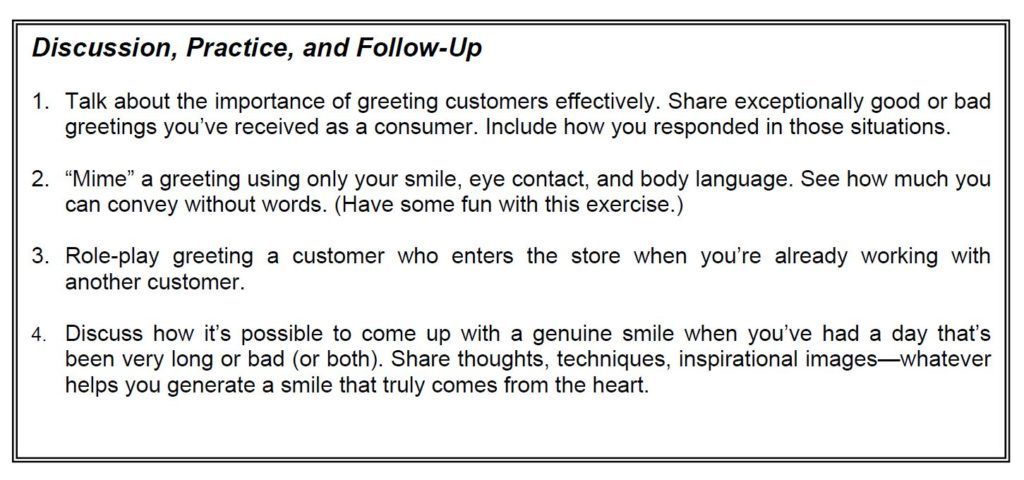Greeting Customers
Article provided for The Plumb Club by Kate Peterson, PC Performance Concepts

At its best, retail selling is a communication process in which a professional identifies a customer’s needs, shows how certain products or services meet those needs, and then actively assists the customer with making a satisfying purchase decision.
While there are many possible variables, the professional is ultimately the key to the whole process.
Selling is also a learnable skill. Of course, certain character traits like honesty, respect for others, enthusiasm, and desire are essential. But beyond these, it’s the combination of knowledge, training, and practice that really enables someone to become a successful sales professional.

Kate Peterson
For the sake of analysis, it helps to look at the selling process as series of separate steps. At the same time, it’s important to realize that most of these don’t necessarily follow a set order. They can also overlap or repeat, with the process moving back and forth between steps.
Regardless of how the rest of the interaction proceeds, however, every selling opportunity does begin with the Greeting—and its style and impact are critical. In just a few moments after initial contact, the customer forms an opinion of you. If that opinion is negative, the chance of success is small. If it’s positive, you have an opening to apply your knowledge and skills. The personal chemistry between you and the customer can also begin to develop.
Your ultimate goal is to create a friendly relationship with every customer you serve. So, it makes sense to begin encounters with customers just as you would with friends—by letting them know you’re sincerely happy to see them. Don’t try to dive into sales presentations. Take your time and be sensitive to the human dynamics of the situation.
The best way to start every greeting is with a genuine smile and direct eye contact. This kind of warm, friendly approach instantly sends many positive messages: You enjoy what you’re doing. You feel good about yourself. You’re proud of your store and your products. You’re going to give your very best effort. You like the customer and want to be a friend and advisor.
Your greeting should also incorporate other elements of body language. Leaning forward a bit with your shoulders squarely facing the customer, looking alert and aware, opening your arms or waving in a friendly way—any or all of these can reinforce the messages your smile and eye contact are sending.
Your tone of voice will brighten naturally if you begin encounters in a positive way, but it’s important to choose the right words, too. For the verbal part of your greeting, the time-honored standbys usually work just fine. “Good morning!” … “Good afternoon!” … “Hi there!” … “Hello!” … “Welcome!”
What you don’t say is, “May I help you?” “How are you?” “What brings you in today?” or “What can I show you?” Standard openings like these easily sound trite, tired, insincere, or pushy. They invite polite brush-offs and “just looking” rejections.
Remember that if you sound like every other salesperson in the world, that’s the way the customer is likely to treat you. So, think about
how you can set yourself apart while getting the customer’s attention in a polite, upbeat, and sincere way.
The greeting step of the selling process should begin as soon as you see the customer—even if she’s half-way across the store. It would be rude to wait till she’s at the counter to acknowledge her presence. If she isn’t looking at you when she enters, smile and raise your voice appropriately in greeting. You’ll make eye contact and receive a response that gets the whole process off to a good start.
When you’re busy with paperwork or other chores and a customer enters, immediately stop what you’re doing and give her your undivided attention. You can put things away once you’ve made her feel welcome. Never make a customer feel that she’s an interruption, or that the tasks you’re doing are more important than she is. If you’re with another customer and there are no other associates available, divert your attention just long enough to smile and make eye contact with the newcomer. Tell her politely that someone will be with her right away, and then make sure that happens.